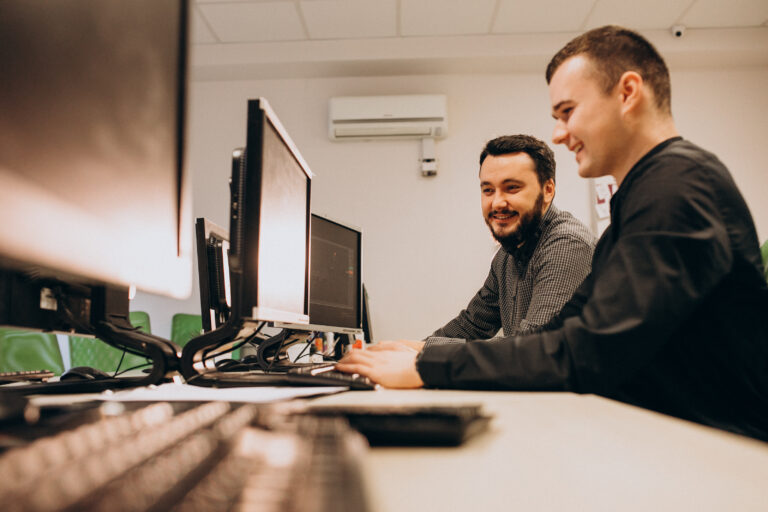Rapid action greatly increases the chances of survival of someone who has suffered a heart attack. Saving lives in such critical moments necessitates Automated External Defibrillators (AED) and Cardiopulmonary Resuscitation (CPR).
However, frequent technical misunderstandings related to the liability of using AEDs or performing CPR can discourage bystanders and businesses from intervening when they should.
In-Pulse CPR Gives Compelling Reasons for Learning CPR/AED On-Site
In-Pulse CPR defends the use of AED devices and using CPR bystander laws to save lives. CPR training professionals stress that learning CPR and AED operation hands-on should be made a priority.
Myth 1: “Applying an AED or Administering CPR Can Lead to Legal Repercussions”
One of many prominent myths regarding emergency assistance is fear of legal consequences. On the contrary, most countries in the world have enacted Good Samaritan laws that are meant to protect individuals offering aid in emergency situations.
These statutes usually absolve rescuers from civil responsibility – as long as they have acted reasonably and in good faith without expecting compensation. Good Samaritan laws foster a public response by reducing legal fears and worries.
Myth 2: “You Need to Be a Medical Professional to Use an AED or do CPR”
Modern AEDs are designed with non-medical users in mind. The advanced technology comes with voice prompts and visual instructions for individuals. Nonetheless, a person’s success rate during resuscitation significantly escalates when they receive CPR/AED onsite training through a program such as the training courses that In-Pulse CPR provides.
Myth 3: “Businesses Are Better Off Without AEDs to Avoid Liability”
Some business owners mistakenly believe their company is at a risk of increased exposure to liability if they have an AED onsite. However, the danger of legal responsibility tends to grow when businesses fail to take adequate measures for emergencies.
The absence of lifesaving equipment. such as AEDs on a company’s premises, due to negligence can result in litigation – especially where comparable venues have installed the devices. Moreover, jurisdictions in all 50 states mandate that public places have accessible AEDs. Therefore, non-compliance may be a self-invitation to trouble.
Myth 4: “AEDs Are Too Complicated and Risky to Use”
The fear that non-medical users may harm people while mishandling an AED is another reason why many people avoid using the devices. But these devices are specially designed to prevent this from happening.
AEDs monitor the heart rhythm and only deliver a shock when it’s necessary and appropriate. Therefore, the chances that a non-medical user can cause an injury with an AED is almost negligible. Both bystanders and medical personnel can handle the devices.
Myth 5: “CPR is Only Effective When Performed by Professionals”
Administering CPR, as a passerby, can increase survival rates by as much as two or three times. For any victim to have a shot at surviving, a bystander should initiate CPR immediately. Professional medical personnel are trained in advanced life support. So, bystander CPR can keep a victim alive until advanced emergency help arrives.
High quality chest compressions maintain blood flow in vital organs until further assistance is received. The importance of bystander intervention and the widespread training of lay people in CPR makes taking an onsite course in CPR/AED a priority.
Good Samaritan Laws in the 50 States
Good Samaritan laws in the US offer protection to rescuers (including bystanders) who attempt to help people who become ill or sustain injuries. Again, laws are intended to encourage bystanders to assist people in emergency situations without worrying about liability.
People who act in good faith are protected under the law. The origin of the laws’ name comes from the parable in the Bible attributed to Jesus Christ. The story recounts the story of a traveler from Samaria who freely helps a fellow traveler who had been robbed and beaten by bandits.
A common example of where the Good Samaritan Law is used is during a cardiac emergency. Again, Good Samaritan Laws encourage bystanders to help people who need emergency help or first aid. People can administer CPR and use an AED without fear that their actions will contribute to further injury or a fatality.
Immediate action by a bystander is indeed critical during an emergency such as a cardiac episode. In the US, most Good Samaritan laws do not apply to medical personnel when on the job.
In fact, in a few states, such as Minnesota, enforce a “failure-to-act law,” which can hold you responsible for not giving emergency aid. For instance, if you don’t render reasonable assistance in Minnesota, you could be charged with a misdemeanor and assessed a fine. This bystander law is also found in the states of Louisiana, Rhode Island and Vermont.
Therefore, learning CPR and having AED training is far more prudent and definitely less risky than choosing not to provide aid. Keeping the public safe should be made a priority. CPR and AED training is a moral responsibility – one that is both useful and good for the public at-large.
The Importance of AED and CPR Training:
A certification program for AED and CPR should be sought by companies and individuals so that they can acquire confidence when handling emergencies. The best training ensures that trainees understand how to identify cardiac emergencies, apply an AED appropriately, and engage in CPR pending the arrival of EMTs.
Also, well delivered training addresses concerns about potential liabilities while promoting active emergency management campaigns.
Bystanders and businesses need to know that legal fears cannot outweigh the massive benefits related to AEDs and CPR intervention. A broad-based approach can help at dispelling the unfounded ideas/misconceptions about AEDs/CPR.
Conclusion:
It is important to continue to debunk the myths related to the use of CPR and AEDs during an emergency. That way, people across different organizations and institutions can be better informed and gain the confidence needed to make timely and life-saving decisions.
Author: Donna Ryan is a writer from Tucson, Arizona.





